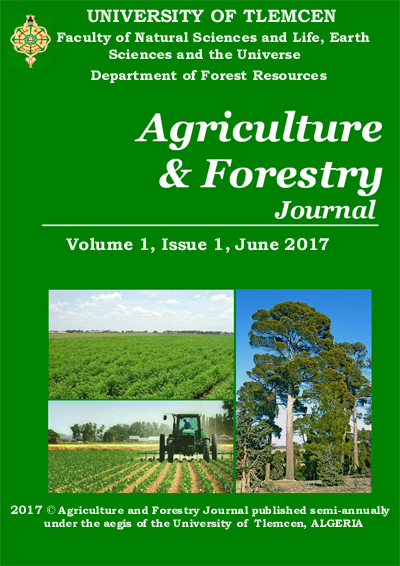Submissions
Submission Preparation Checklist
All submissions must meet the following requirements.
- The submission has not been previously published, nor is it before another journal for consideration (or an explanation has been provided in Comments to the Editor).
- The text is single-spaced and all illustrations, figures, and tables are placed within the text at the appropriate points, rather than at the end.
- The submission file is in Microsoft Word, or RTF document file format.
- Submitted papers should be prepared with a font size no smaller than 11 pt for the word-processed manuscripts, fonts of the text Times New Roman, text in tables, and figures with a font size 9.
- The text adheres to the stylistic and bibliographic requirements outlined in the Author Guidelines.
Articles
Section default policyCopyright Notice
The Authors who publish with Agriculture and Forestry Journal agree to the following terms:
- Confirm that the work described has not been published before;
- That it is not under consideration for publication anywhere else;
- That its publication has been approved by all co-authors, if any, as well as by the responsible authorities at the institute where the work has been carried out;
- Authors retain copyright and grant Agriculture and Forestry Journal (AFJ) right of first publication;
- Authors grant AFJ the right of future publication of the work in additional ways and in or on additional media, especially in printed form as print-on-demand;
- Authors are able to enter into separate, additional contractual arrangements for the non-exclusive distribution of the journal's published version of the work (e.g., publish it in a book), with an acknowledgement of its initial publication in this journal;
- I hereby declare, that I/we have obtained permission to use all figures, tables, photos or images quoted on my article submitted to AFJ, from their respective sources. I also declare that I am sole responsible for any possible infringements of copyright regulations and that AFJ, will not be held liable nor will it handle any possible accusations of copyrights infringements;
- I/We as the author (s) are to be held liable and will bear any costs related to legal disputes which derive from the non-authorised use of the copyrighted material;
- The publisher will not be held legally responsible should there be any claims for compensation;
- Agriculture and Forestry Journal reserve the right to make the printed article available publically via the https://journals.univ-tlemcen.dz/AFJ website or similar platforms in the future.
Privacy Statement
The names and email addresses entered in this journal site will be used exclusively for the stated purposes of this journal and will not be made available for any other purpose or to any other party.









